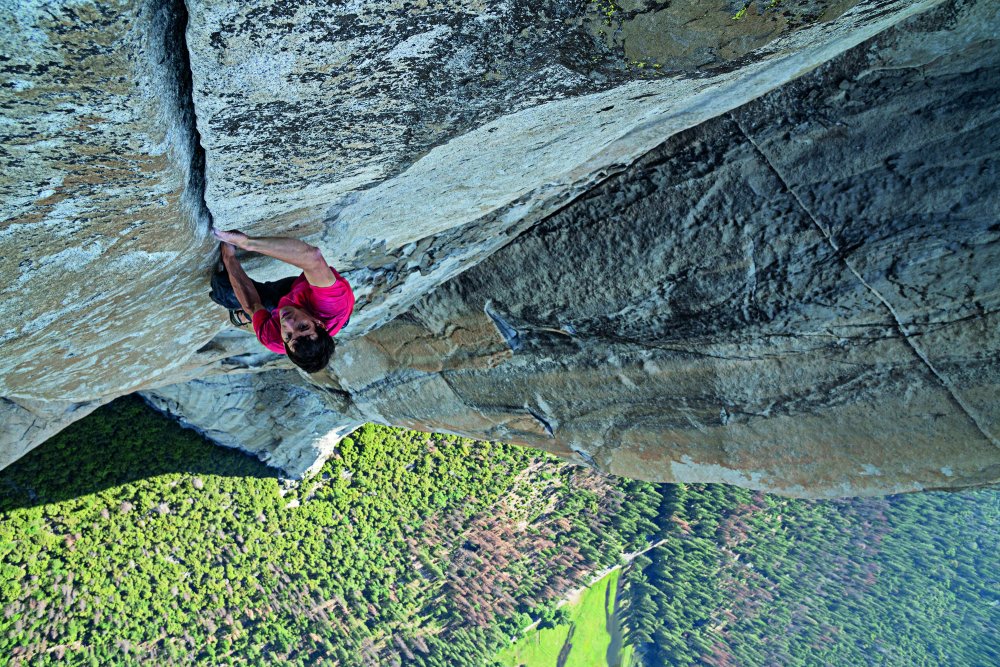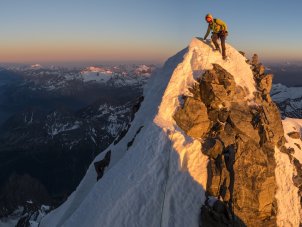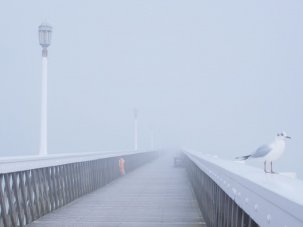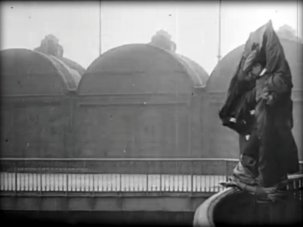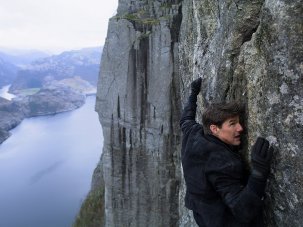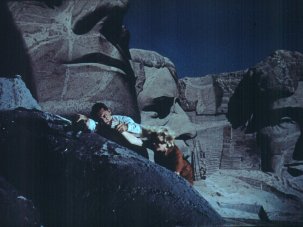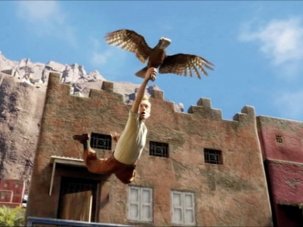Oh, my God, look at that man! Can you believe what he’s doing!
Free Solo is on UK cinema release and is reviewed in the January/February 2019 issue of Sight & Sound.
No kid ever asked more from cinema than that miracle of action. The motion was emotion. It was what delighted Parisians in 1895 when Lumière figments first walked in open space and looked at that newcomer, the camera.
It was the elan that let Douglas Fairbanks and Burt Lancaster vault from here to there – doing their own stunts! Or the energy that drove Flynn and Rathbone in their delirious sword-fight from The Adventures of Robin Hood (1938). Or it was Bogart walking across a room in The Big Sleep (1946) – the dream and the dread dogging his every step.
It was Buster Keaton mooning around when the house fell on him in Steamboat Bill, Jr. (1928), trusting that he would fit in the window space. It was Elsa Lanchester hissing and seething in Bride of Frankenstein (1935). Or Cary Grant willing Ingrid Bergman down the staircase at the end of Notorious (1946) – and doing that backflip in Holiday (1938). It was heroes being brave, like Jimmy Stewart in an Anthony Mann western clambering over rock and guilt and fear to be vindicated. So much of the motion was a man alone doing some crucial thing, though I think the purest examples of male prowess in American film will always be Fred. Fred and Ginger, Fred and Rita, Fred and Cyd, or even Fred alone, dancing By Myself in The Band Wagon (1953), in just one set-up. He refused to cut those dances, to prove he had done them.
In that golden age there was always the vision of someone doing something momentous, solo yet human. What else were movies about?
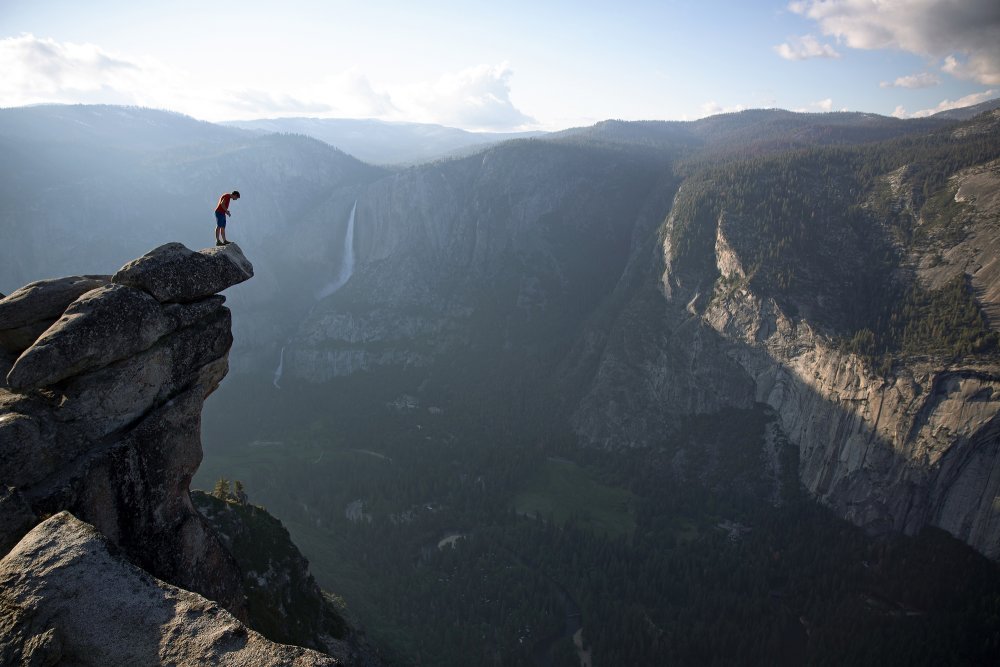
Free Solo (2018)
The miracle can still prevail, even in a cinema where it is so habitual now to trick action that we are losing faith with doing things in pictures. But in Free Solo – apparently a documentary – Alex Honnold (aged 32 on the day in question, 3 June 2017) climbs the sheer face of El Capitan, a ravishing and forbidding peak in Yosemite National Park in California. It is nearly 3,000 feet in height, awesome to behold, and impossible to contemplate as something you or I might try, or climb.
Honnold did it that day, setting out at 5.32am, not just alone, but without ropes, without bolts screwed into the rock, or any climbing equipment. No safety net. No second takes. No one had done this before – or has done it since. He was at the top by 9.28 a.m. In that time he could have watched Celine and Julie Go Boating (1974) with Laurel and Hardy’s The Music Box (1932) as an opener (and still had time to eat a pizza).
He used his hands and his sneakered feet to hold on to the hard, glassy screen of mountain. He wore a red shirt so that he could be seen from a distance. He had water and chalk to keep his hands dry, nothing else – except for several cameras in anxious attendance.
This cannot have been an easy event to rely on. As you study the ascent you recognise how much more likely it is that an unsupported climber will fall than ever reach the flat top. You foresee the existential panic of being caught, like a fly on the wall, unable to move up or down. The enterprise of the movie risked disaster and the possibility that the camera would have to tilt to follow Honnold falling all the way to the ground. That shot might last 20 seconds – longer than it takes to fall in love. Would it be a swift drop, like Tom the Cat, or Wile E. Coyote? Of course, such a shot would have to be shelved, part of the discretion that made Werner Herzog spare us the soundtrack record of the fatal attack on Timothy Treadwell and Amie Huguenard in Grizzly Man (2005).
That would be too real a thing – and there are not so many of those nowadays at the movies. Bears have been replaced by high-tech: the fight in The Revenant (2015) is thrilling, but no bears were hurt or let loose. A century of film has left us with increasing doubts over such unbearable realities. But nobody can question Free Solo, and its dominating actuality explains its popularity: by the end of November, the film had already grossed $10 million in the US.
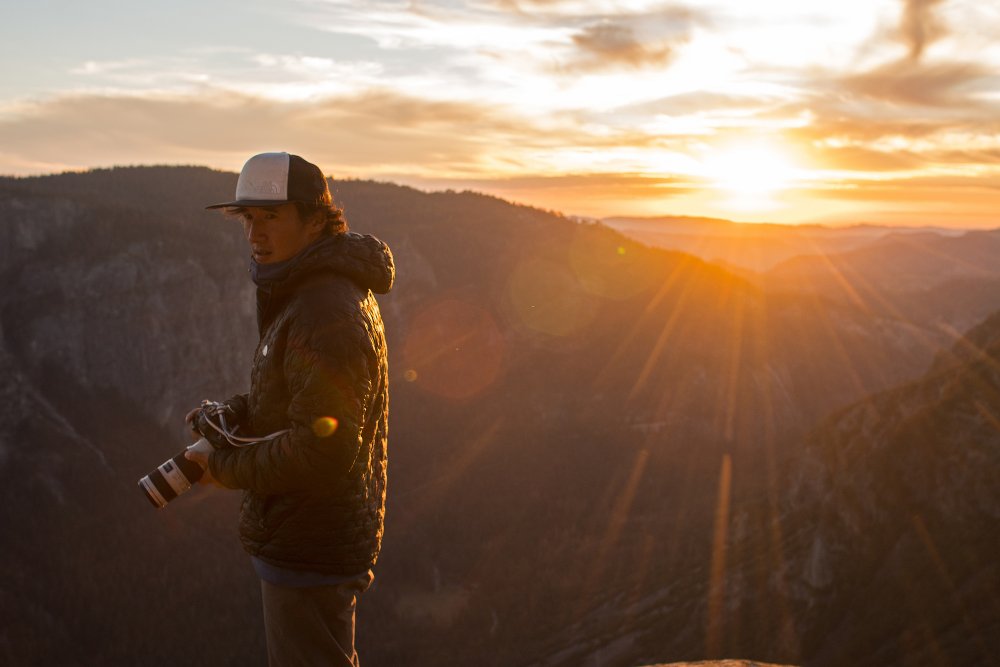
Free Solo (2018)
But Free Solo is not just opportunistic coverage of an astonishing feat. The film had been planned and its moral issues mulled over by the married couple who directed it, Elizabeth Chai Vasarhelyi and Jimmy Chin. Two years ago, they made Meru, about the climbing of a peak (21,000ft) in the Himalayas. That film was produced by their company, Little Monster Films. Its poster advised “Believe in the Impossible”, and audiences went along with this in the mood of extreme sports and the edginess of survival. Chin was actually one of the team that conquered Meru, and he filmed as he climbed. Similarly, in Free Solo, he is the leading cameraman.
The team is not just several camera people, some of whom were dangling from ropes to film Honnold as he ascended. There were other production forces, too: Itinerant Media; the company of Walter Parkes and Laurie MacDonald; and National Geographic Documentary Films, who are the official distributors of Free Solo. All of that is sensible and enabling. But it broaches the question of premeditation and a considered estimate that Honnold could make this climb. How was that reached? Because he had practised in advance and demonstrated that he could do it. But a mishap could still have occurred: one slippery footstep; one limp wrist; a bird startled out of a crevice and flying in the climber’s face; or even a faltering of belief or need in Honnold himself.
Could there have been a movie if he’d fallen? Of course: the public has been ready for tragedy ever since Captain Scott and four companions perished on the way back from the South Pole in 1912. Timothy Treadwell was such a lost cause, though Herzog is disapproving of his muddled thinking in Grizzly Man. An obituary film for Honnold could have been fashioned, especially with the presence of his girlfriend, Cassandra ‘Sanni’ McCandless, who plays such a poignant role in Free Solo.
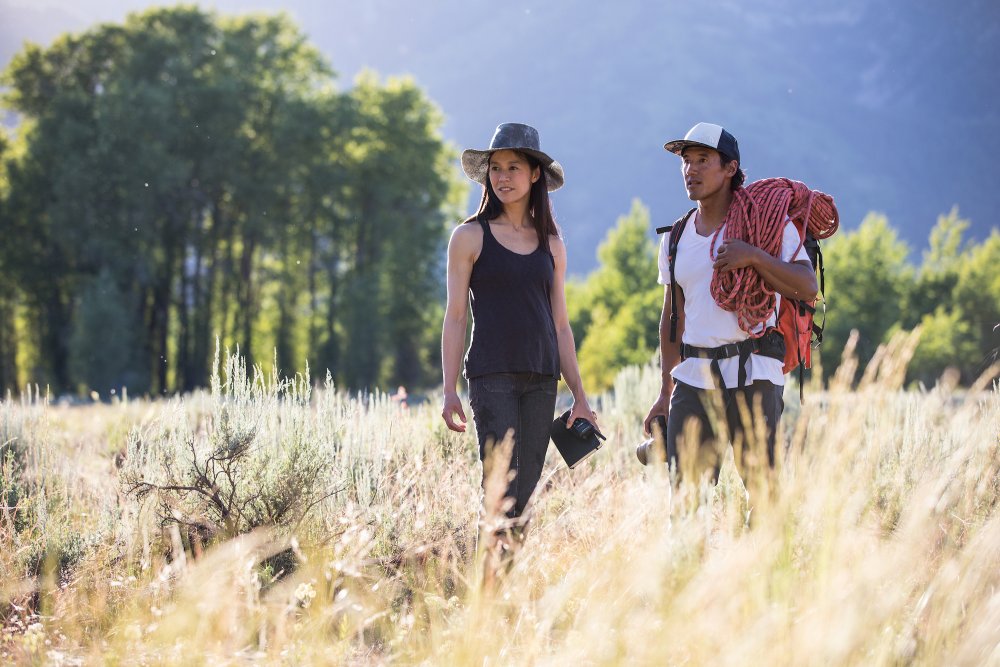
Free Solo (2018)
But as we watch the film, we know Alex is going to win. We may remember the 2017 news when he conquered El Capitan. More powerful than that is the certainty in the filming, and the structure of the story – including the score written for the documentary by Marco Beltrami (he did The Hurt Locker, 2008). His score is inspirational, fearful, yet ready for feature-film triumph. The film believes in the courage, skill and enterprise in shinning up El Capitan with the verve of a boy on a big tree. Equally, in 1953, when Jimmy Stewart clawed his way up a rock face in The Naked Spur (the spur was his climbing tool), we knew he was going to take out the rascal Robert Ryan and rescue Janet Leigh as his future mate. In those days, when a movie man went free solo in a desperate ordeal, he made it. That was why we were sitting in the dark, gripping the arms of our seat.
We were playing a game called suspense, which is at the heart of storytelling and has a helpless urge to turn Alex Hannold into a character from fiction, whether he likes it or not. This is distinctly not the same as watching Bob Beamon live take his first run-up steps on 18 October 1968 at the Mexico City Olympics and not knowing that he is going to long jump 29ft 2½in, which was 21¾in further than anyone had jumped before. Nor did Vo Suru, the NBC cameraman, know that Brigadier General Nguyen Ngoc Loan was going to shoot Nguyen Van Lem in the head on 1 February in that same year, instead of just kidding about it. The ‘soloist’ may look like a hero or a villain, but our true freedom is not knowing what will happen. And movies have always lived in the vulnerable crack between those tendencies.
Look at that man. See what he’s doing. Who is he to be doing such things?
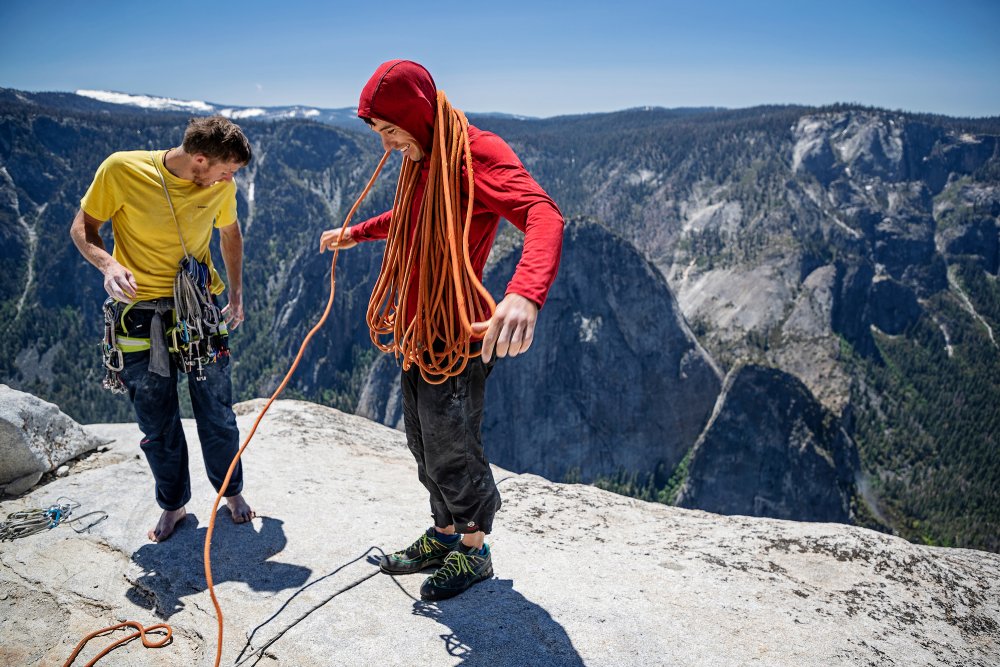
Free Solo (2018)
There is an Alex Honnold in life, and there is the figure in a red shirt in Free Solo. On watching the film several times, and coming to terms with the vertiginous façade of El Capitan, the views from its height, and the figure clinging to the rock face, I am more interested in this character than in the mountain or what it took to climb it. I have no difficulty imagining the ordeal of the climb, or the terrors the climber has to overcome, but in truth – like Beamon in Mexico City, like Mozart or Nabokov – he makes what he does feel easy. That is his ultimate gift to us. In the same way, Fred Astaire had no thought of letting a dance seem difficult. If the strain showed, his charm was shattered.
Obviously, the filmmakers were persuaded into doing the picture because of the physical challenge. But equally, they ‘approved’ the guy doing it, and that leads us to the mystery of his driven nature. He is an ordinary guy, it seems, but he is also Ahab or Steve Jobs – implacable.
I hope the real Alex Honnold lives until he’s 100, or whatever age he selects. Since the Free Solo climb he has already broken the speed record for an assisted climb on El Capitan: he and Tommy Caldwell did that in just under two hours on 6 June 2018. But looking at him as a character in a story one cannot escape the sense that he is climbing to exist, and to die. So many people he has known have been killed on some face or other, and Honnold shows no inclination except to attempt harder climbs, or more surreal challenges. Is one-handed on his horizon? Or doing it in a blindfold?
That is not offered with disrespect, or facetiously. If you watch and listen to Alex in the film I think that destiny is indisputable. On the day of his big climb, his girl friend Sanni does not wait at the foot of El Capitan looking upwards. She drives away to a distant place – I was reminded of Etta Place telling Butch Cassidy and the Sundance Kid that when their dark time came she would be gone. Not that Etta didn’t care for her boys, but they had each other and Alex has the mountain.
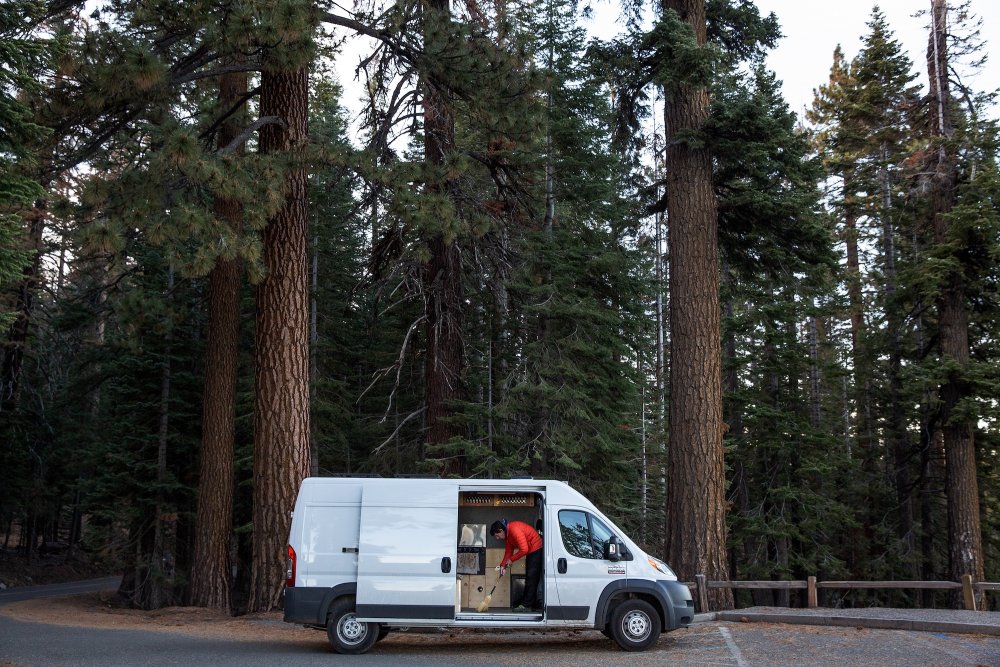
Free Solo (2018)
Honnold was born in Sacramento, California, in 1985. He started climbing as a kid, but showed no more than ordinary talent. He attended the University of California at Berkeley, but dropped out. Soon thereafter he made his home in a van that had belonged to his mother. He has lived that way for a decade now, driving around to climbing sites in his movable camp. We see that van, and we understand how hermetic and self-effacing it is. He eats immense meals of protein and carbs for energy, but he does not drink or smoke. He says he is like a Mormon, except for the God bit.
Free Solo admits that he has had several girlfriends in the past, and now he has Sanni. She is vivacious, chatty, emotional; she is a modern version of the future wife and soulmate Janet Leigh represented in The Naked Spur. A magazine piece said Sanni is “the all-American girl next door armed with a soul-melting smile and dimples”. It’s clear that she would like to settle down with Alex in domesticity. At her urging, he does buy a house in Las Vegas, but then he keeps it empty and prefers to live in his van parked in the driveway.
Alex is as good-looking as Sanni. Of course, he has not been ‘cast’ for Free Solo, though once the film gets under way, he does feel designated or appointed. He is lean, dark, and he has a goofy smile not always connected with what is going on. Once upon a time, I daresay, Montgomery Clift might have had his part – if Clift had been capable of buffing up for rudimentary climbing the way he was trained to wear six-guns and a cowboy hat for Red River (1948). When I first saw Free Solo, I thought of the actor Jim Caviezel – there is a resemblance, and Caviezel’s dark gaze has often been used for loners. How else do we weigh his Jesus in The Passion of the Christ (2004) or his Private Witt in The Thin Red Line (1998), the soldier who goes into the jungle alone to draw enemy attention?
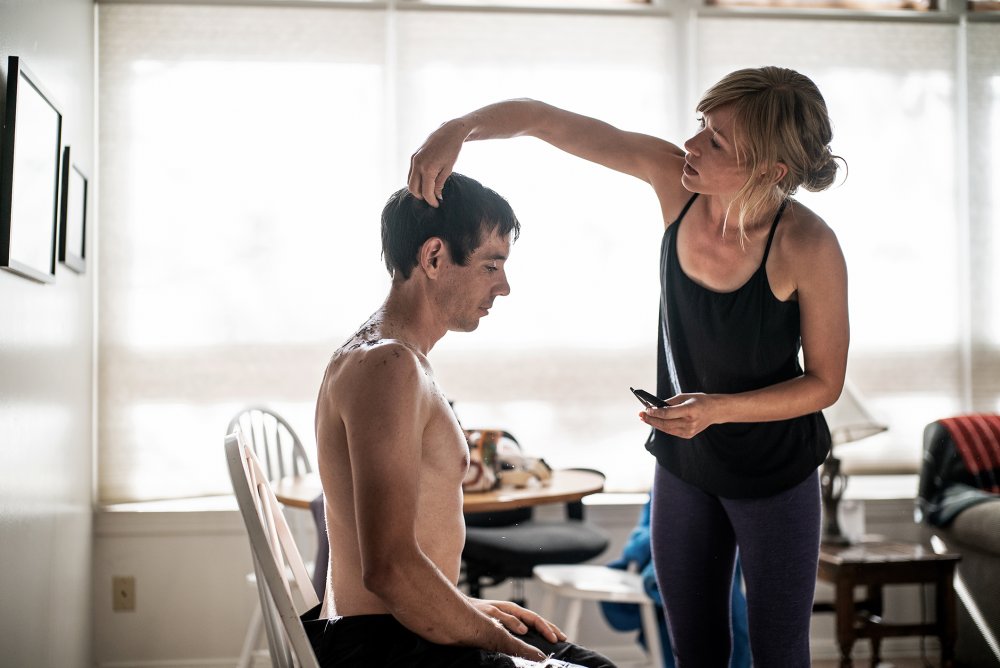
Free Solo (2018)
Alex has no script, but he has intense direction. He climbs in the way a shark has to stay in motion. Along that line, he tells Sanni in a matter-of-fact way that El Capitan means more to him than she does. Her fraught regard implies she understands her second place, and cannot quite live with it. We see them as a couple in the van, tucked up together in a bunk bed, and we assume that they are lovers, that they have sex. But then as the film advances with no place for Sanni, we see Alex on El Capitan and there is time to realise that his physicality there is erotic as well as athletic.
There is a long crack in the face of El Capitan and Alex inhabits it to brace himself and keep moving upwards. Splayed against that rock, he is tender and urgent, a sperm intent on scarcely visible clefts and indentations in the rock. It is a body he is negotiating, and when he has to spread out to make a perilous shift from one crack to another his action rhymes with the idea of love-making. This may not be in his head, but surely he fucks El Capitan. And in her deepest being Sanni knows this. Free solo is not just a genre of climbing; it is a philosophy and a necessary loneliness.
Is it archaic Nick Ray romanticism to say that loneliness is necessary? And how far does that supposition restrict the American movie in any attempt to match real life? If you think of The Naked Spur, there was never a chance that Stewart would drawl to Janet Leigh, “Well, look, honey, I’m not much good with people, I’d better be moving on. I want to be free and on my own.” There was even less likelihood that Leigh’s Lina Patch could say, “Listen, Howard, we can share a sleeping bag for a few nights, but I’m heading west, riding solo. I need to own myself.” That constitutional caution hobbled so many intriguing women. Is it really plausible (or useful) for Feathers (aged 27) to marry Sheriff Chance (51) in that strictly limited Rio Bravo (1959), or doesn’t she deserve to keep going west to form a talent agency, a venture capital start-up or a sophisticated social media house of ill repute? So many white lies are being spread around by that urbane realist named Howard Hawks.
Not many films ventured into the subject matter of a man and a woman being together. Free solo means lack of encumbrance, responsibility or conversation, and now at last we are recognising how it has aided the legend of the man without a place, a home or an ordinariness that was so often alien to the heroic glorying of movies. There is some hint in Free Solo that Alex Honnold is a restless loner, a man who might be touched by Asperger’s. The film has vague talk to the effect that researchers found Alex to have a deficient amygdala – that he does not feel fear as much as most people, and does not register the distress a girlfriend might have over his inaccessibility.
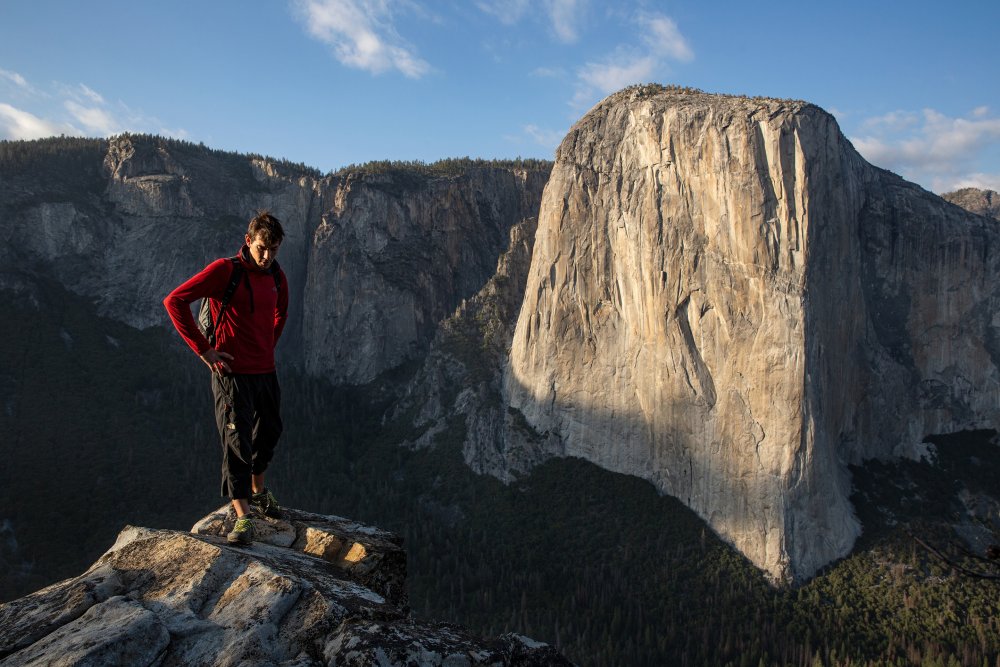
Free Solo (2018)
We have loved and honoured these loners, and resolutely denied that their condition could be an illness. Charlie Chaplin walks off into the horizon. Shane rides away from the valley where the Starrett family offered him a livable reality. At the end of The Searchers (1956), Ethan Edwards disdains the indoors, the family and being decent with other people, and staggers off into the blaze of desert. In It’s a Wonderful Life (1946), Jimmy Stewart’s George Bailey ends in unified family happiness, but after 60 years the dark prospect of the film’s Pottersville seems closer to our America than idyllic Bedford Falls. At the end of The Godfather Part II (1974), Michael is solitary, magnificent and impacted.
I’m using a few films to define a generality and you may say that’s taking ‘free solo’ too far. But then consider what the current pit of America owes to a resplendent and unapologetic free soloist. No, Donald Trump could not climb El Capitan – he had heel spur problems as a young man, enough to keep him out of military service. But as his ‘administration’ thrashes around, he likes to ignore assistance or recommended reading. Often he reserves his cruellest derision for those closest to him. Uninterested in America, in its people, its laws or its ideals, he is remorselessly content with himself.
That sounds ominous, but more alarming is how his solitary executive status is actually emulated by a lot of Americans. His mania can seem sturdy and authentic. Some are amused that a trickster might lie or cheat all the time; they smirk at his candid urge to grab women by the pussy. With contempt for so many, Trump does not welcome conversations. Instead he rattles off the catchphrases of demented egotism. Yes, he’s terrible, but our culture of cinephilia should pay more attention to how far he is a warped example of the screen’s romance with great lost men. Don’t forget, Trump has said that his favourite film is Citizen Kane (1941), that glorification of the well-appointed dead end and its lonely beast.
-
The Digital Edition and Archive quick link
Log in here to your digital edition and archive subscription, take a look at the packages on offer and buy a subscription.




